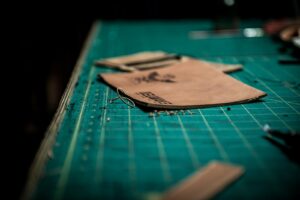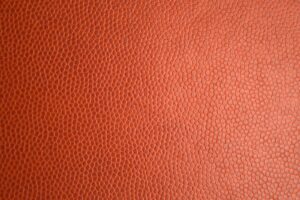Leather is one of the most versatile and durable materials used in a wide variety of products, from luxury handbags to durable furniture. With such a rich history and myriad applications, understanding the different types of leather can help consumers make informed choices when purchasing leather goods. In this blog post, we will delve into the various types of leather, their characteristics, uses, and care, while highlighting key terms such as full grain leather, top grain leather, and faux leather products.
What is Leather?
At its core, leather is a natural material made from animal hides. The tanning process transforms raw hides into durable, flexible material that can be used for various applications. Leather is categorized based on its processing method, texture, and appearance. Understanding these classifications will not only enhance your appreciation for leather products but also guide you in selecting the best leather for your needs.
The Classification of Leather
Leather can be classified into several categories, each with its unique properties and applications. Key factors in classification include the grain layer, type of tanning, and the treatment applied to the leather. The main categories include full grain leather, top grain leather, split grain leather, and synthetic leathers. Each type serves different purposes and offers distinct advantages.
Full Grain Leather
Full grain leather is widely regarded as the highest quality leather available. This type of leather retains the natural grain of the hide, showcasing its unique imperfections and markings. The natural beauty of full grain leather develops a rich patina over time, enhancing its character.
Characteristics of Full Grain Leather
- Natural Imperfections: Full grain leather maintains the original surface of the hide, highlighting natural markings that tell a story.
- Durability: With tightly packed fibers, full grain leather is highly resistant to wear and tear, making it ideal for leather furniture and luxury items like handbags.
- Breathability: This type of leather allows air to circulate, preventing moisture build-up and promoting longevity.
Applications
Full grain leather is commonly used in high-end products such as:
- Leather furniture: Its durability and aesthetic appeal make it a popular choice for sofas and chairs.
- Watch straps: The refined appearance of full grain leather adds elegance to any timepiece.
Top Grain Leather
Top grain leather is another premium option, but it undergoes a slightly different process. The top layer of the hide is sanded and treated to remove imperfections, resulting in a smoother surface.
Characteristics of Top Grain Leather
- Refined Appearance: Unlike full grain leather, top grain leather has a more uniform appearance due to the removal of natural flaws.
- Durability: While still strong, it may not be as robust as full grain leather. However, its surface is more resistant to stains and spills.
- Flexibility: Top grain leather is often softer and more pliable, making it comfortable for items like automotive upholstery.
Applications
Top grain leather is frequently used in:
- Automotive upholstery: Its smooth texture and resistance to wear make it ideal for car interiors.
- Fashion items: Many luxury handbags and wallets use top grain leather for its sophisticated look.
Grain Leather Types
Corrected Grain Leather
Corrected grain leather is a type of leather that has undergone additional processing to create a uniform texture. The imperfections are sanded down, and an artificial grain is often embossed onto the surface.
- Characteristics: It has a more uniform appearance and is generally less expensive than full grain and top grain leather.
- Applications: Often used in budget-friendly leather goods, including shoes and bags.
Nubuck Leather
Nubuck leather is created from the outer layer of the hide, which is sanded to achieve a velvety texture.
- Characteristics: Known for its luxurious feel, nubuck leather is soft yet durable. However, it can be more susceptible to staining.
- Applications: Commonly found in upscale footwear and luxury handbags.
Aniline and Semi-Aniline Leather
Aniline leather is dyed with aniline dyes, allowing the natural grain to show through while retaining the hide’s natural characteristics. Semi-aniline leather is treated with a light protective coating.
- Characteristics: Aniline leather showcases the hide’s unique features and imperfections, while semi-aniline leather offers a balance between natural beauty and durability.
- Applications: Used in high-end furniture and apparel.
Split Grain and Other Variants
Split Grain Leather
Split grain leather is made from the lower layers of the hide, which are split away from the top layer. This type is less durable but more affordable.
- Characteristics: It has a more uniform appearance and is often treated to mimic the look of higher-quality leathers.
- Applications: Used in budget-friendly leather goods, such as wallets and belts.
Suede Leather
Suede is a type of split leather that has been brushed to create a soft, fuzzy surface.
- Characteristics: Known for its texture, suede is less durable than full grain and top grain leathers but offers a unique aesthetic.
- Applications: Common in footwear, jackets, and accessories.
Bonded Leather
Bonded leather is made from leftover leather scraps that are bonded together with adhesives. While it contains some leather, it is often considered a man-made material.
- Characteristics: It is less durable and has very little real leather content, making it a budget-friendly option.
- Applications: Often used in inexpensive furniture and book covers.
Faux Leathers
Faux leather, also known as synthetic leather, is created from man-made materials like polyvinyl chloride (PVC) or polyurethane. It mimics the look and feel of real leather without using animal hides.
Characteristics of Faux Leathers
- Affordability: Faux leathers are typically less expensive than genuine leather products.
- Variety: Available in a range of colors and finishes, faux leather can cater to various design preferences.
- Ethical Choice: For those concerned about animal welfare, faux leather offers a cruelty-free alternative.
Applications
Faux leather is widely used in:
- Fashion: Handbags, shoes, and jackets often utilize faux leather for trendy, budget-friendly options.
- Furniture: Faux leather furniture provides a stylish look without the maintenance concerns associated with real leather.
Exotic Leathers
Exotic leathers, such as alligator leather and snakeskin, are prized for their unique textures and rarity.
Characteristics of Exotic Leathers
- Distinctive Appearance: Each exotic leather has a distinctive look that sets it apart from traditional leather types.
- High Value: Exotic leathers can be significantly more expensive due to their limited availability and unique characteristics.
- Ethical Considerations: Purchasing exotic leathers often comes with ethical considerations regarding sourcing and conservation.
Applications
Exotic leathers are often used in luxury fashion items, including:
- High-end handbags and wallets
- Specialty shoes and belts
Care and Maintenance
To ensure the longevity of leather products, proper care and maintenance are essential. Here are some tips to keep in mind:
Leather Conditioner
Using a quality leather conditioner is crucial for preserving the natural beauty of your leather goods. Conditioning helps to maintain suppleness and prevents cracking.
Cleaning Tips
- Avoid Excessive Moisture: Water can damage leather, so clean spills promptly and avoid exposing leather items to excessive humidity.
- Use a Soft Cloth: For cleaning, use a soft, dry cloth to wipe away dirt. For deeper cleaning, consult specific care instructions based on the leather type.
Faux Leather Care
Faux leather is generally easier to clean and maintain than genuine leather. Simply wipe it down with a damp cloth to remove dirt and stains.
Final Thoughts: Different Types of Leather
Understanding the different types of leather is essential for making informed purchasing decisions. Whether you choose the durability and natural beauty of full grain leather, the refined look of top grain leather, or the affordability of faux leather, knowing the characteristics and applications of each type can enhance your experience. By investing in quality leather goods and taking proper care of them, you can enjoy the timeless appeal and durability of this classic material.
Now that you’re familiar with the various types of leather, it’s time to explore your options. Whether you’re in the market for genuine leather products or considering faux leather alternatives, understanding the differences will help you choose wisely.
Other suggested articles:



